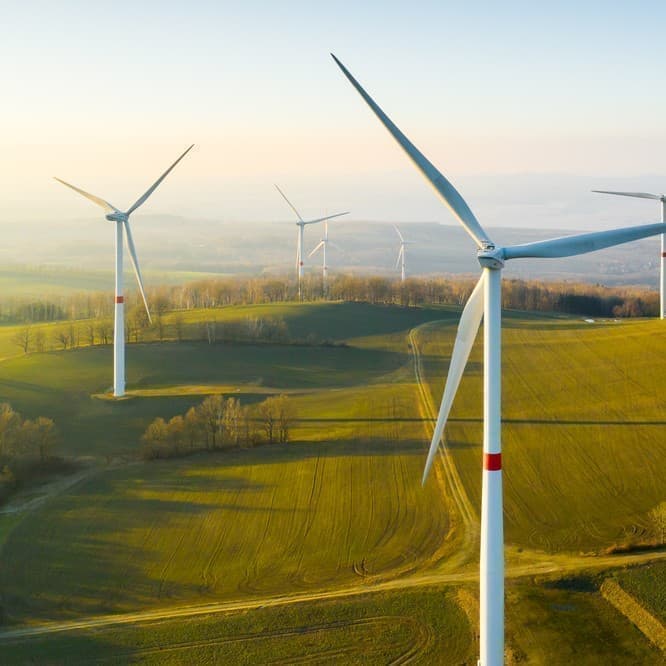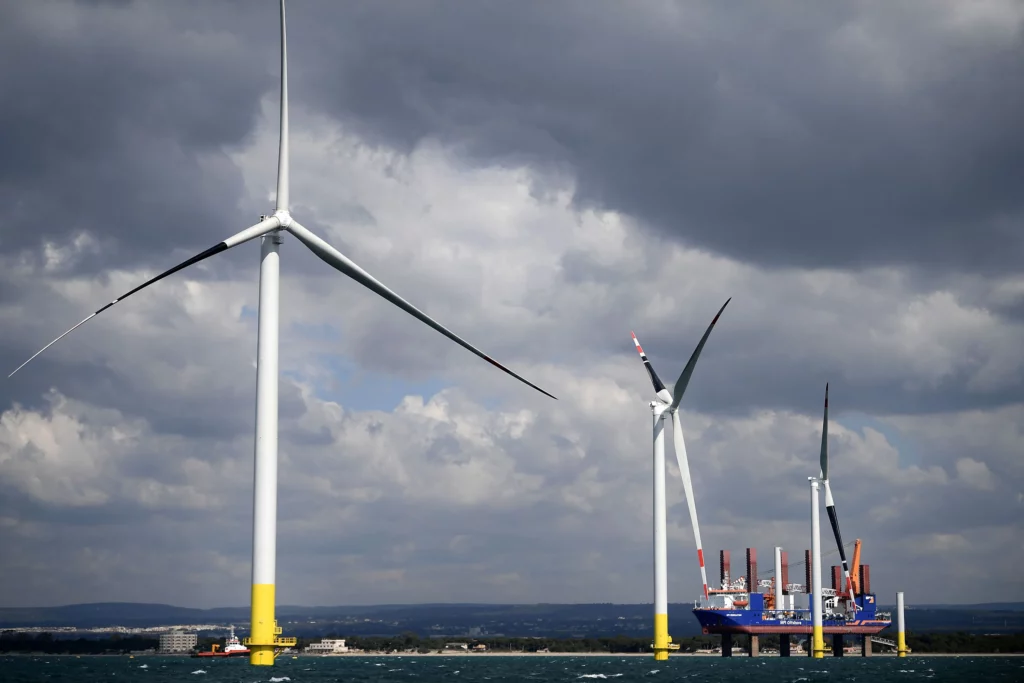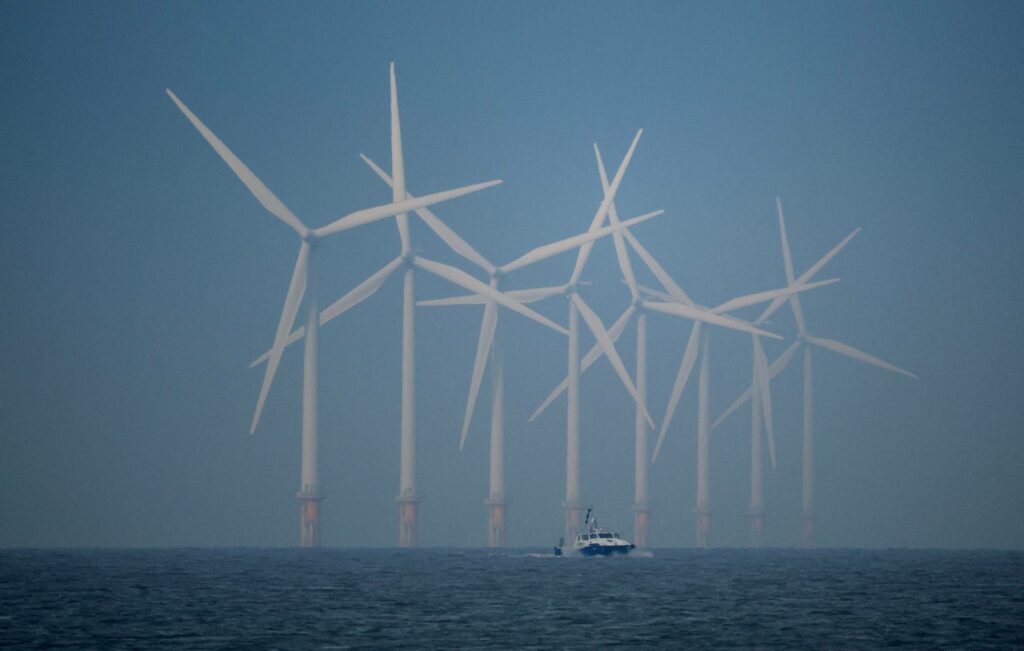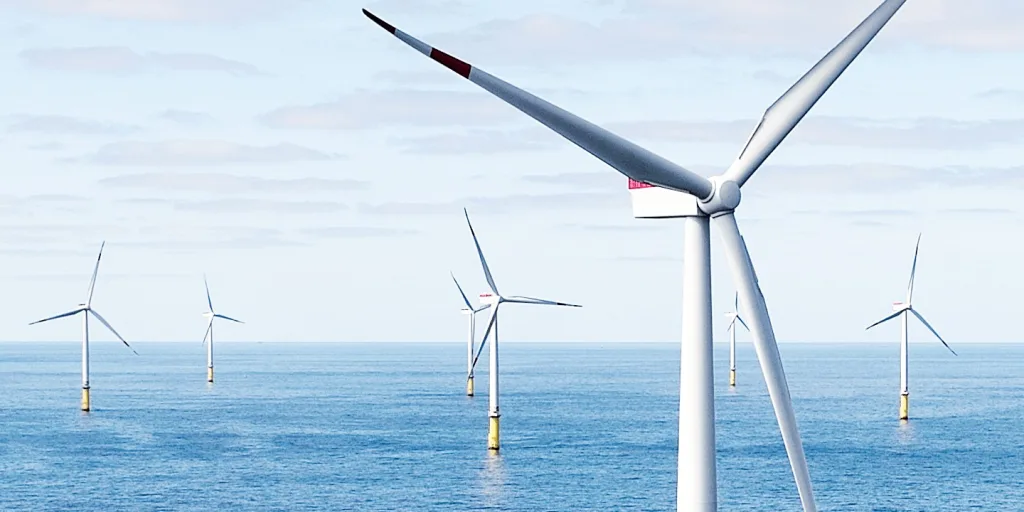Offshore wind projects are being hampered by an economic crisis that has wiped off billions of dollars in scheduled spending this week, just as the globe requires clean energy more than ever.
A subsidiary of Spain’s Iberdrola SA agreed to abandon a deal to sell electricity from a proposed wind farm off the coast of Massachusetts. Orsted A/S, a Danish developer, lost a bid to offer offshore wind electricity to Rhode Island, whose main utility argued escalating costs rendered the project too costly. Vattenfall AB, a Swedish state-owned utility, has canceled plans for a wind farm off the coast of Britain, citing inflation.
Even as demand for renewable energy grows, rising prices are delaying offshore wind projects. Extreme heat caused by climate change is putting a strain on electric systems around the world, emphasizing the need for increased power generation and adding urgency to calls for a faster transition away from fossil fuels. The drive to lessen dependency on Russian oil and gas has given clean-energy initiatives traction throughout Europe.

“Energy from these projects is desperately needed,” Helene Bistrom, head of Vattenfall’s wind division, said this week during an earnings call. “With the new market conditions, it doesn’t make sense to continue.”
The three affected projects would have supplied 3.5 gigatonnes of power, or more than 11% of the total offshore wind fleet already deployed in US and European waters. And the figures may soon rise. According to BloombergNEF, at least 9.7 gigatonnes of US projects are at jeopardy because their developers want to renegotiate or quit contracts to sell power at prices they believe are currently too low to justify the investments.
The shelved projects are the latest evidence of trouble for offshore wind farms, which use turbines the size of skyscrapers to extract energy from sea air, where winds are most powerful and persistent. Rising material costs, notably for steel, compelled turbine manufacturers to hike their pricing. Other critical services, such as specialized vessels to install the turbines, have also skyrocketed in price. Furthermore, rising interest rates make borrowing more expensive.

That is not to say that investment has come to a halt. Despite cost hikes, several projects in the United States and the United Kingdom are still moving forward. BP Plc and TotalEnergies SE bid €12.6 billion ($14 million) earlier this month to create offshore wind farms in Germany’s North Sea. However, canceled and delayed projects demonstrate that if governments are serious about offshore wind, they will have to spend more to acquire it.
Capital expenses and prices for turbines, cables, and other equipment have “gone up sharply,” according to Orsted CEO Mads Nipper in a LinkedIn post. “This means that, after years of steep decline, the price of renewable energy will have to temporarily rise.”
While some of the projects may still proceed in the future, they would need to be able to achieve higher electricity rates in order for the investments to be profitable. Any delays mean increased reliance on fossil-fuel generators, which contribute to climate change, putting emission-cutting targets farther out of reach.
Offshore wind is crucial to meeting decarbonization targets. Because of their vast scale, marine turbines are one of the most efficient ways to create renewable electricity. According to BloombergNEF data, each megawatt of built capacity of offshore wind farms in the United States may produce up to three times as much as a solar park. In gloomy Britain, wind farms generate five times the electricity of a comparable-sized solar farm.

As a result, governments all around the world have set lofty goals for expanding deployment. President Joe Biden wants to develop 30 gigatonnes of offshore wind farms in the United States by the end of the decade, up from almost nothing now. In Europe, countries such as the United Kingdom, Germany, and the Netherlands pledged earlier this year to attain 120 gigatonnes of wind generating capacity by 2030, more than quadrupling existing capacity.
However, with governments still determined to see their green ambitions produce cost savings to consumers, it’s unclear how they can reach that level of expansion.
“The announcement from Vattenfall to halt development of the Norfolk Boreas wind farm signals the beginning of what could become a genuine crisis,” said Megan Smith, associate director of offshore wind at the Carbon Trust. “Policymakers must take note and act quickly to ensure that other developers and wind farms do not follow in their footsteps.”
Download The Radiant App To Start Watching!
Web: Watch Now
LGTV™: Download
ROKU™: Download
XBox™: Download
Samsung TV™: Download
Amazon Fire TV™: Download
Android TV™: Download

